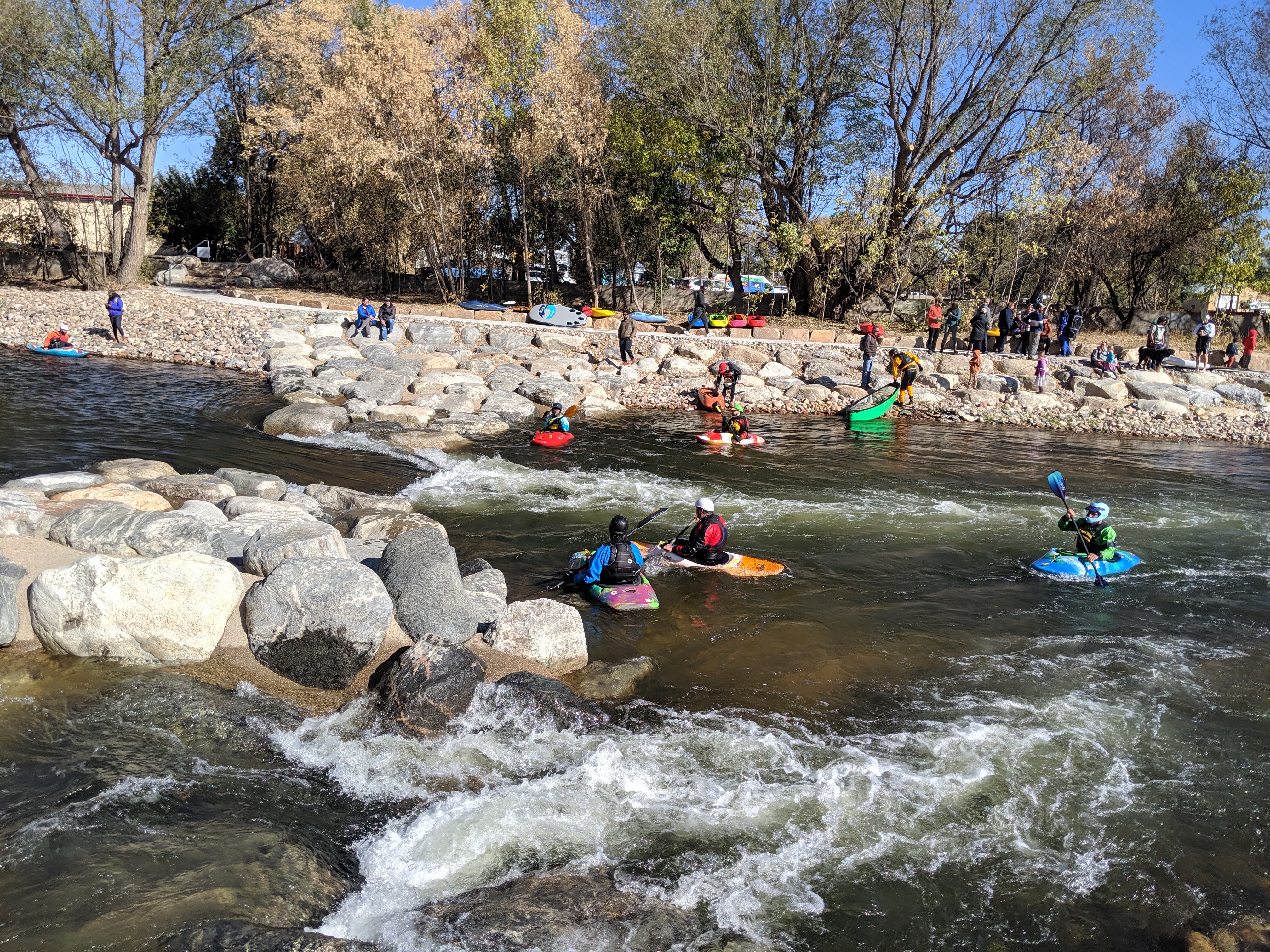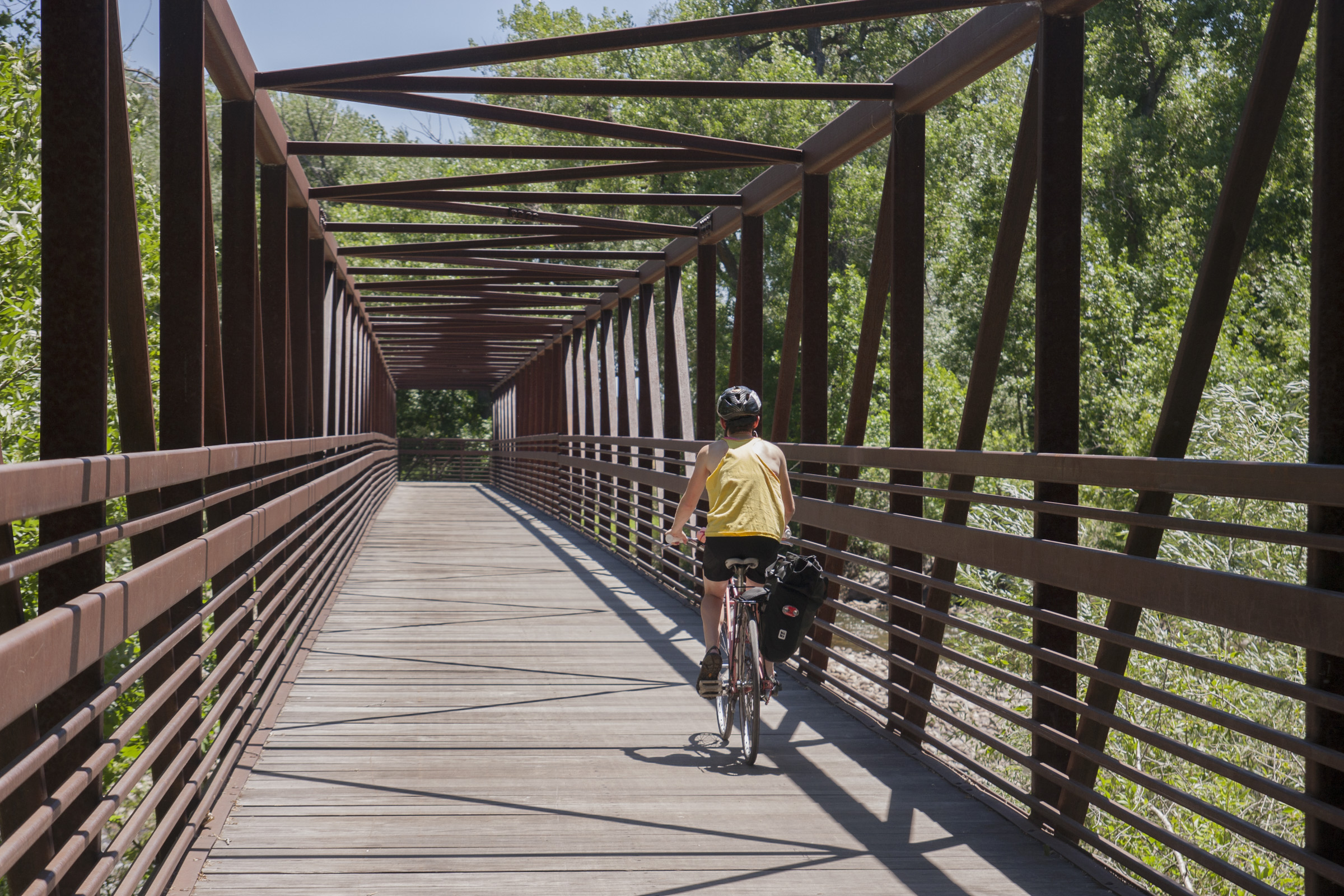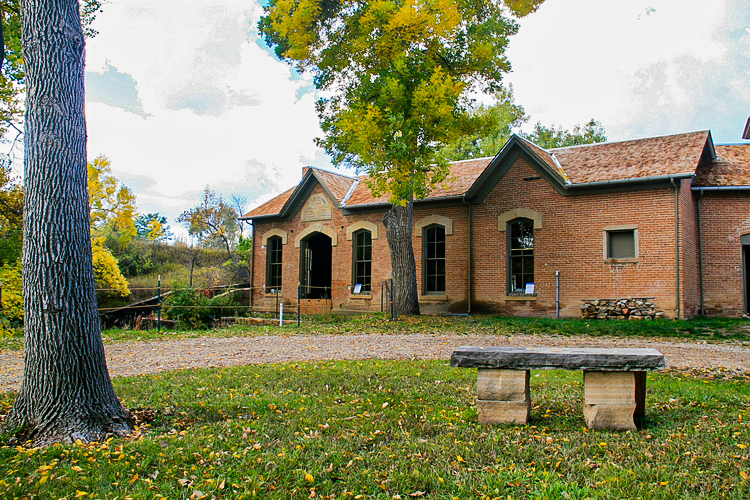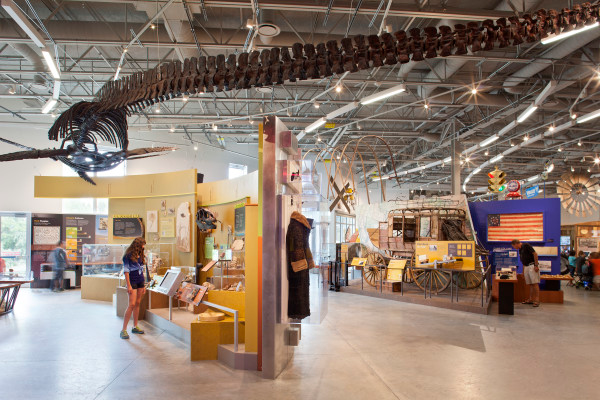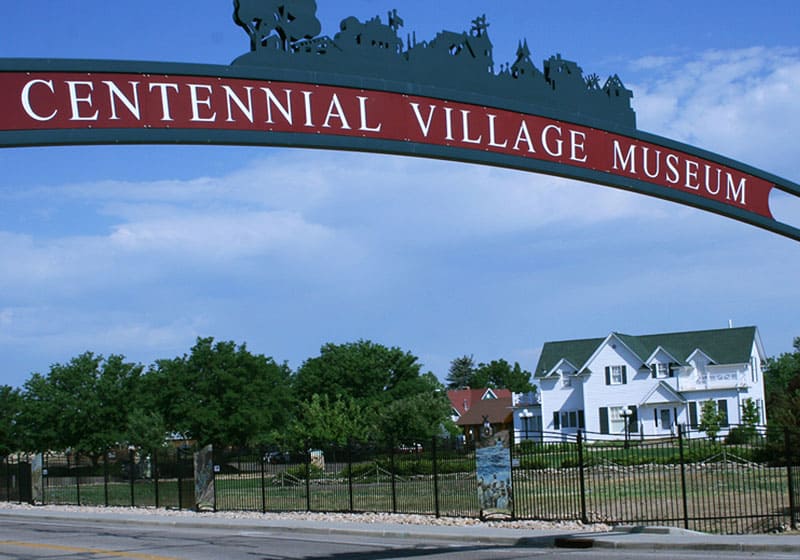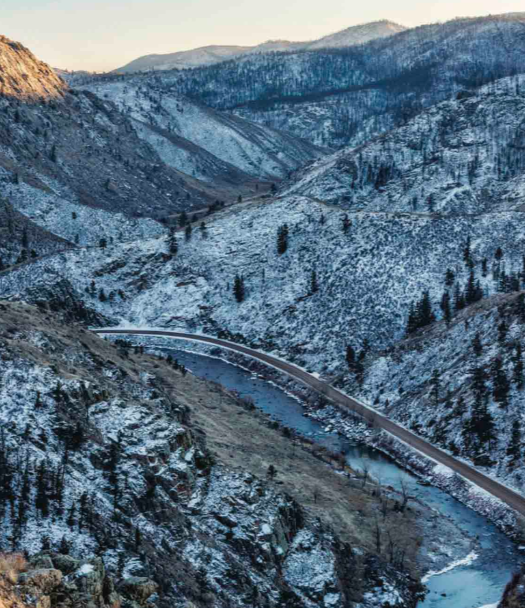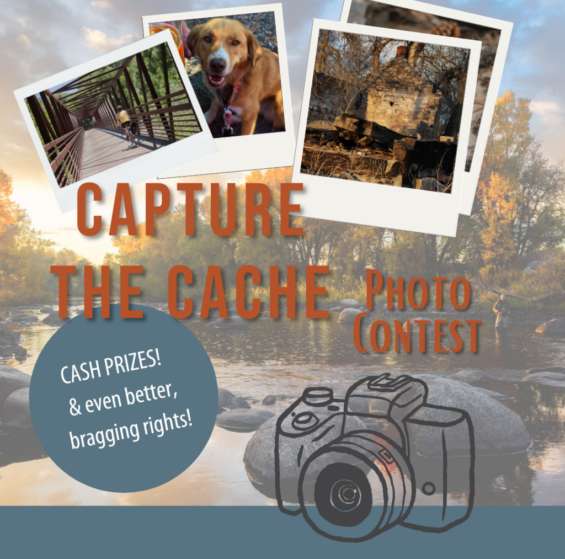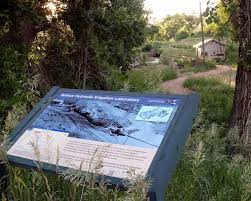Cache la Poudre River National Heritage Area
WATER HISTORY, CYCLING, FISHING, AGRICULTURE, CRAFT BEER
Cache la Poudre River National Heritage Area begins at the Roosevelt National Forest in the Poudre canyon, flows through the City of Fort Collins and extends to its confluence with the South Platte River, just east of Greeley. The area commemorates the river’s significant contribution to the development of water law in the western United States, the evolution of the river’s complex water delivery systems and the cultural heritage of the region. From beer tastings at 25+ breweries and bike riding along 35 miles of the Poudre trail, to fly fishing the river and enjoying concerts and western rodeos, there’s a lot to experience here.
The People
Indigenous Americans including the Paleo-Indians, Ute, and Arapahoe lived along the banks of the Cache la Poudre River for thousands of years before being forced to relocate by the United States military in the 1870s. The Northern Arapaho tribe specifically used the region by the river for clan gatherings, ceremonies, and food gathering more than 100 years before European settlers made their way to the valley. White settlers and water leaders who came after, sought to manipulate the river for optimal human benefit. Farming proved to be the most regionally viable occupation of the time. With the turn of the 20th century, northern Colorado joined the “beet boom” bringing Mexican, German, and Russian migrant workers to the region. This and many other factors led to a diversification of northern Colorado’s economy in the twentieth century, making the Cache la Poudre river what it is today, a “hardworking” river, serving the needs of not only farmers but also urban residents, industrialists, and recreationalists.
Places to See
1883 Fort Collins Water Works
This historic facility was built in 1882-1883 to provide the growing town of Fort Collins with an adequate supply of water for fighting the building fires that plagued the early town. The water supply to homes also was expected to reduce waterborne illnesses. The Water Works building is located on a 26-acre site that includes a portion of the historic Cherokee Trail and Overland Stage route. Water delivery continued until 1905 when the new water filter plant opened in the Poudre Canyon. Designated as a State and Local historical landmark, the property is currently being transformed into a Water Interpretive Center. Guided tours of the site allow visitors to learn about the mechanics of water delivery. See artifacts, maps and displays, including the original steam pump room and the filter room. Tourism Information Open house events held the second Saturday of each month, May through October, 10:00 am to 3:00 pm. A virtual tour is available on their website.
Fort Collins Museum of Discovery
Along the banks of Cache la Poudre River, the Fort Collins Museum of Discovery provides hands on exhibits and programs that introduce guests to early European settlers; wildlands & wildlife exhibits; food, forage, and farm which includes information on the Parshall flume, Hispanic beet farm workers, and the first peoples exhibits.
The Hand that Feeds STATUE
 Today sugar beet production is a small part of Colorado’s economy, but in the twentieth century it was the most important agricultural activity in the state. Area farmers relied on sugar beets as an important cash crop, however, each harvest required thousands of non-unionized fieldworkers. Successful beet cultivation required periods of such intense drudgery that farmers had to find wage-laborers to expedite the work. Farmers and sugar companies actively recruited Mexicans and Chicanos, and the region drew many migrants.
Today sugar beet production is a small part of Colorado’s economy, but in the twentieth century it was the most important agricultural activity in the state. Area farmers relied on sugar beets as an important cash crop, however, each harvest required thousands of non-unionized fieldworkers. Successful beet cultivation required periods of such intense drudgery that farmers had to find wage-laborers to expedite the work. Farmers and sugar companies actively recruited Mexicans and Chicanos, and the region drew many migrants.
The standard tool for working the sugar beets was the short-handled hoe. The short-handled hoe required workers to stoop over as they cultivated crops. Working with the short-handled hoe had long term health consequences for the laborers. Campaigns by United Farm Workers and others helped outlaw the use of the hoe in 1975.
The sugar beet industry, which started in Colorado in 1899, was the largest employer of Hispanics in Colorado by the late 1920s. Without their labor, the sugar beet industry and other labor-intensive agricultural industries in Colorado would not have prospered. Through their sweat and toil, Colorado became the largest sugar producing state in the United States in 1909.
Windsor History Museum
Cenntennial Village
Things to Do
EXPLORE THE LOWER POUDRE RIVER CANYON
Experience the expansive recreation and live music culture as you explore the Lower Poudre River Canyon with this family friendly, dog friendly itinerary. Start your journey at Mountain Whitewater booking a half day, full day, or two-day rafting trip. As you head towards the canyon, you will find Ten Bears Winery, a locally owned company that grows their own grapes and specializes in 100% Colorado vinifera and hybrid varietals. The tasting room hours vary, so make sure to call ahead. The nearby Picnic Rock and Gateway Natural areas offer kid and dog friendly hiking trails, picnic tables, and gorgeous views of the scenic river and its wildlife. Love watching outdoor concerts and lounging by the river? We’ve got the place for you! The Mishawaka is an iconic riverfront music venue with a seasonal outdoor amphitheater, indoor lounge, and full-service café. On your way back to town from a day spent exploring the canyon, The Paddler’s Pub offers beautiful views of the foothills, sand volleyball, yard games and a playground. They proudly serve only beer and wine made in Colorado and often have food trucks and live music.
CAPTURE THE CACHE
The annual Capture the Cache photo contest celebrates the natural beauty, culture, and heritage of the Cache la Poudre River National Heritage Area. If you are adventuring in the heritage area, snap some stunning photos and submit them in our annual spring contest for a chance to win cash and non-cash prizes! Winning images offer a snapshot of what makes the 45-mile heritage area unique and important. Categories are subject to change yearly. Winners do not have to be present to win. Sign up for contest updates.
SELF-GuIDED WALKING AND BIKING TOURS
Experience breathtaking views of the river along the scenic trail from Fort Collins all the way to Greeley! The Poudre River Trail is a 40-mile paved trail accessible to walkers and bikers. The trail starts northwest of Fort Collins in Bellvue and travels under the I-25 interstate. It continues to River Bluffs Open Space, east of Timnath, connecting 21 beautiful miles of trail running southeast through small towns, wildlife areas and parks all the way to Island Grove Park in Greeley. More self-guided tours.
Featured Destinations:
- Old Town Fort Collins: Downtown Fort Collins includes over twenty restored historical buildings, including the Northern Hotel, a landmark that was restored to its former “Art Deco” elegance. Events and festivals in Old Town are a staple during nice weather with weekly free concerts, beer and food and music festivals. Did you work up an appetite exploring the Poudre Trail? Old Town offers a wide range of restaurant options: from pizza to a quick lunch, fine dining to food trucks, and coffee shops to craft breweries.
- Colorado Feed & Grain: Located in downtown Timnath, Colorado Feed & Grain is a historic landmark built in 1920 to serve the Great Western Railway, Colorado farmers, and local agriculture. The location has a beautiful patio where you can enjoy a selection of craft beer, food trucks, and artisan coffee and tea. Stop in to browse the gift shop stocked with local goodies!
- Downtown Windsor: Visit the vibrant town of Windsor, home to the Windsor Lake Trail. The trail follows the perimeter of the lake for 2.25 miles and has a dog park with lake access for your furry friend to go for a swim. Stop by the Windsor Farmers Market on Saturdays to buy locally sourced produce and goods or catch live music at the amphitheater. While in the area, visit the Windsor History Museum (open weekends from Memorial Day through Labor Day), featuring historic buildings from around the Windsor area.
- Island Grove Regional Park: At the eastern end of the Poudre River Trail, you will find Island Grove Regional Park in Greeley.

